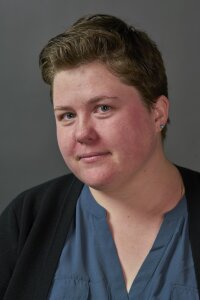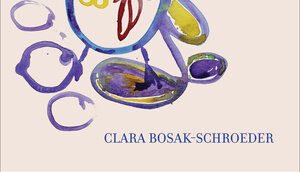This post is part of our #AIASCS2021 blog series. Learn more at our virtual conference exhibit.
As part of our author blog series for the 2021 Archaeological Institute of America & Society for Classical Studies virtual conference, we reached out to author Clara Bosak-Schroeder to discuss the story behind her new book, Other Natures: Environmental Encounters with Ancient Greek Ethnography, what ancient Greek ethnographies can tell us about today’s crises, and what else she’s been working on lately.

Clara Bosak-Schroeder is Assistant Professor of Classics at the University of Illinois at Urbana-Champaign. In 2015, Clara Bosak-Schroeder (she/they) joined the Classics department of UIUC where she is also an affiliate of History, Medieval Studies, Comparative and World Literature, and the Unit for Criticism and Interpretive Theory. Since joining UIUC, Clara has won a Faculty Fellowship from HRI (2017-2018), a Junior Fellowship from the Unit for Criticism and Interpretive Theory (2018-2020), and has been recognized as a LEAP Scholar (2018-2020). They will be a junior fellow at the Center for Advanced Study in 2021-2022.
Clara works in reception and museum studies and at the intersection of classics and the environmental humanities on such subjects as tiny robotic theaters, giant elephant puppets, and hairy women. Her first book, Other Natures: Environmental Encounters With Ancient Greek Ethnography demonstrates that ancient Greek authors cast humans and nonhumans in complex, interdependent relationships. A second project examines how modern and contemporary artists interpret the seven wonders of the ancient world. They also coordinate CripAntiquity, an advocacy organization for neurodiverse and disabled students, instructors, scholars, and artists in ancient Mediterranean studies. You can follow Clara Bosak-Schroeder’s work at theburningboy.com and on Twitter @thaumatic.
Thanks for joining us! Can you tell us what motivated you to write this book?
Bosak-Schroeder: As a classics major at UC Berkeley, I encountered Pliny the Elder’s encyclopedic Natural History in a class with Trevor Murphy. I was captivated by Pliny’s ethnographies, his descriptions of other places and peoples, and I realized that these descriptions were in part motivated by environmental anxieties—of which I had plenty of my own! Pliny looked to people different from himself to understand how human-nonhuman relationships shape the world. This fascination with ethnographies drove my dissertation research on the environmental discourse of Herodotus, Megasthenes, and Agatharchides. (I had hoped to cover Roman authors too, but I ran out of time.)
What was one of the most surprising or interesting insights that came from your research?
I originally focused the book on Greek writers and their environmental thought, but Ian Moyer (one of my PhD advisors) encouraged me to look for non-Greek perspectives as well. How might the people described by these texts have shaped them in return? Since my training is in Greek and Roman cultures I needed help to take this question on, and I was humbled and honored to receive it from many scholars, most of whom I contacted out of the blue. With their guidance I found tantalizing evidence for how Egyptians, Indians, and Scythians influenced their own representation and contributed to Greek environmental knowledge.
Why are ancient Greek ethnographies worth examining when thinking about how to confront environmental crises today?
I see ancient Greek ethnographies as laboratories for testing out different environmental theories. By examining how non-Greeks used natural resources and related to other species, Greek writers invite their readers to mentally experiment with different ways of being in the world. This type of experimentation is especially needed now, when global environmental problems seem so insurmountable. Ancient Greek texts don’t provide 1-1 solutions. Rather, their different assumptions and contexts can help readers today understand the constraints and possibilities of the present.
Where is your research going next?
Although I love teaching at a university, I hate how exclusive it is. Museums have their own problems to be sure, but I find them tremendously exciting places for artists, researchers, educators, and the public to collaborate. Since finishing Other Natures, which ends with a chapter on museum pedagogy, I have started studying how modern and contemporary artists are reinterpreting ancient Mediterranean monuments. One of my subjects is Hive, a collaboration between sound artist Lakshmi Ramgopal and sculptor Nancy Davidson that reimagines the multi-breasted cult statue of Artemis at Ephesus. Co-curating this installation was a blast!
How do the concerns of this book intersect with your work for CripAntiquity?
A driving premise of Other Natures is that marginalized perspectives should be centered and trusted sources of knowledge. As a disabled person in a deeply ableist profession, I have experienced marginalization first hand. Now that I have the institutional power and privilege of a tenure-track job, I advocate for other disabled and neurodiverse people in ancient studies through CripAntiquity, an organization I founded in 2017 to make higher ed more accessible. We’re hosting an online meetup January 18—please join us!

